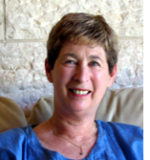
The Undoing Project; a Friendship that Changed Our Minds by Michael Lewis; W.W. Norton and Co. (c) 2017.
By Dorothea Shefer-Vanson
MEVASSERET ZION, Israel — In this book Michael Lewis sets out to describe the way two Israeli psychologists worked together over the course of several years to develop a theory about the process of decision-making and the way this affects and is affected by the inner workings of the human mind.
Michael Lewis begins his account of the long and convoluted road taken by Danny Kahneman and Amos Tversky, leading to the award to the former of the 2002 Nobel Prize in Economics (Amos Tversky died previously, and the Nobel Prize is awarded to living persons only), with an exceedingly long and detailed description of the way professional basketball players are selected for teams throughout the USA. The thought processes influencing the way trainers and coaches decide whom to accept or reject involve the consideration of large amounts of data, though the eventual decision may well be based on something other than the mere analysis of data, such as body image, racial preconceptions and ‘gut feeling.’
As an experienced journalist, Michael Lewis brings a personal angle into his writing about a subject that is essentially abstract and obscure, and embarks on a detailed depiction of the childhood and youth of Danny Kahneman, starting in Nazi-occupied Paris, continuing with the family’s flight into the French countryside and eventual emigration to Israel. Amos Tversky grew up in Israel, served in combat in the IDF, and participated in the Six Day War.
After military service both Danny and Amos were among the first students of psychology at the Hebrew University of Jerusalem. Fascinated by the field of human decision-making already then, Danny Kahneman was tasked with assessing the psychological suitability of newly-inducted soldiers for the various units as well as for being sent to be trained as officers. He developed a relatively simple test that proved far more successful than other ways of identifying suitable officer material.
Both Kahneman and Tversky pursued academic careers with considerable success, working alongside one another in Jerusalem for many years, developing their ideas, theories and experiments as well as publishing papers and books. Michael Lewis stresses the close ties between the two men, more or less to the exclusion of almost any other academic or personal relations, though both got married and had children.
In later years, however, it seems that some kind of rift developed between them. Both moved to universities in the north American continent, but Tversky appeared to attract greater attention and obtain better posts at more prestigious universities than Kahneman. Nonetheless, their academic productivity continued to blossom, and their development of the decision-making processes that take place in the human mind was taken up by other disciplines, e.g., medicine, economics, and even the legal profession.
Michael Lewis presents just some of the approaches adopted by the duo in order to assess, measure and gauge the ways in which individuals process information in order to reach a decision, and they are indeed many and varied. In their work the methods of behaviorist psychology are combined with features from Gestalt theory, thus forming a completely new school of testing and analysis, yielding findings that have been found to be significant for a myriad of disciplines.
Lewis has worked hard to present this complex subject in a way that is interesting for the general reader, as is indicated by the list of sources and acknowledgements given at the end of the book. The workings of the mind continue to fascinate students of human behavior, and it is thanks to the work of Kahneman and Tversky that some more light has been shed on this intriguing sphere.
*
Shefer-Vanson is a freelance writer based in Mevasseret Zion, Israel.She may be contacted via dorothea.shefer@sdjewishworld.com